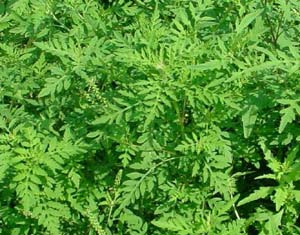
Not to early to think about what you are planning on planting this Spring! Take a look at the table below and please give us a call is you have any questions! Enjoy! 702-433-4700Common Name Scientific NameHeight (feet)GrowthRate LongevityWaterNeeds Uses in the LandscapeGrassAlkali Sacaton Sporobolus airoides 3 Mod Mod Low H, D, E
Indian Rice Grass Achnatherum hymenoides 2 Mod Short Low D, W, H
GROUNDCOVER
Anemopsis Anemopsis californica 1 Mod Long High N, M
Desert Carpet Acacia Acacia redolens 2 Fast Short Low E, D, EG
SMALL ORNAMENTAL
Bi-Color Penstemon Penstemon Bicolor 3 Mod Short Low W, C
Desert Marigold Baileya mulitradiata 2 Slow Short Mod C
Flax Linum lewisii 2 Mod Short Mod C, D, L, E, W
Globe Mallow Sphaeralcea ambigua 4 Fast Short Low N, C, D, M
Green Indian Tea Ephedra viridis 3 Slow Long Low H, D
Horsetail Equisetum hyemale 4 Fast Long High EG, E
Indian Tea Ephedra nevadensis 5 Mod Short Low H, W
Mojave Woodyaster Xylorhiza tortifolia 2 Fast Low C
Mountain Rush Juncus balticus 1 to 3 Fast Mod High H
Palmer's Penstemon Penstemon palmerii 4 Mod Short Low W, C
VINE
Trumpet Vine Campsis radicans 40 Fast Long Low L, W, D, C
CACTUS
Beavertail Cactus Opuntia basilaris 1 Slow Long Low N
SHRUBS
Apache Plume Fallugia paradoxa 6 Mod Long Low E, N, D,C, EG
Bladdersenna Colutea arborescens 8 Fast Long Low W, D, E, H
Burrobrush Hymenoclea salsola 3 to 8 Fast Short Low N, H, D
Bursage Ambrosia dumosa 2 Fast Short Low N, H, D
Caragana or Siberian Pea Shrub Caragana arborescens 10 Fast Mod Low E, S, D, L, W
Caragana Pygmy Variety Caragana Pygmaea 3 Mod Mod Low E, S, D, L, W
Centennial Broom Baccharis 'Centennial' 3 Fast Long Low EG
Cotoneaster Cotoneaster acutifolius 10 Fast Mod Low E, S, D, M, W
Creosote Larrea tridentata 6 Slow Long Low EG, N, S, W
Desert Broom Baccharis sarothroides 7 Mod Short Low E, N, H, D
Desert Princeplume Stanleya pinnata 5 Fast Short Low C
Emory Baccharis Baccharis emoryi 12 Fast Mod Mod H, N, W
Euonymus Euonymus japonica 6 Mod Long Mod E, S, EG, L, W
E- Erosion Control, N- Native, D- Drought Tolerant, C- Color, W- Wildlife, H- High Salt Tolerance, M- Moderate Salt Tolerance, L- Low Salt
Tolerance, EG- Evergreen, S- Wind ScreenFor other related topics please visit - http://
forestry.nv.gov/ndf-state-forest-nurseries/las-vegas-state-tree-nursery/













































